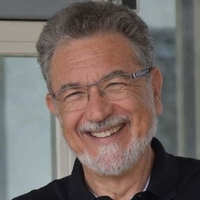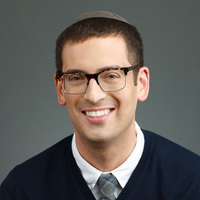
Julia Watts Belser
Harvard University, Women's Studies in Religion Program, Harvard Divinity School, Visiting Faculty & Research Associate
Julia Watts Belser is Associate Professor of Jewish Studies in the Department of Theology and Religious Studies at Georgetown University, as well as affiliated faculty in the Program for Jewish Civilization. Her work centers on rabbinic literature and Jewish ethics, with particular research interests in Jewish feminism, queer culture, environmental thought, and disability studies.
She previously taught in the Department of Religious Studies at Missouri State University and held a residential fellowship in Women’s Studies in Religion at Harvard Divinity School during 2011-2012. She received her Ph.D. from the University of California, Berkeley and the Graduate Theological Union and was ordained as a rabbi by the Academy for Jewish Religion, California. She has also taught at the Graduate Theological Union, the University of California, Davis, the Leaven Center for Spirituality and Social Change, and the Masorti Lehrhaus in Berlin, Germany.
Active in the American Academy of Religion, she co-chairs the program unit on Religion and Disability Studies and serves on the steering committee of Religion and Ecology. She chairs the Committee on the Status of People with Disabilities and is a member of the Committee on Theological Education. She also serves on the board of the Society for Jewish Ethics and is a board member of Nehirim, a national community of lesbian, gay, bisexual, transgender Jews, partners, and allies.
In addition to her academic publications, she has co-authored A Health Handbook for Women with Disabilities, published by the Hesperian Foundation and distributed to grassroots groups and health workers around the world. Her poetry, fiction, and essays have appeared in Midstream: A Journal of Jewish Thought, Kalliope: A Journal of Women’s Art and Literature, and Fireweed: A Feminist Quarterly.
She previously taught in the Department of Religious Studies at Missouri State University and held a residential fellowship in Women’s Studies in Religion at Harvard Divinity School during 2011-2012. She received her Ph.D. from the University of California, Berkeley and the Graduate Theological Union and was ordained as a rabbi by the Academy for Jewish Religion, California. She has also taught at the Graduate Theological Union, the University of California, Davis, the Leaven Center for Spirituality and Social Change, and the Masorti Lehrhaus in Berlin, Germany.
Active in the American Academy of Religion, she co-chairs the program unit on Religion and Disability Studies and serves on the steering committee of Religion and Ecology. She chairs the Committee on the Status of People with Disabilities and is a member of the Committee on Theological Education. She also serves on the board of the Society for Jewish Ethics and is a board member of Nehirim, a national community of lesbian, gay, bisexual, transgender Jews, partners, and allies.
In addition to her academic publications, she has co-authored A Health Handbook for Women with Disabilities, published by the Hesperian Foundation and distributed to grassroots groups and health workers around the world. Her poetry, fiction, and essays have appeared in Midstream: A Journal of Jewish Thought, Kalliope: A Journal of Women’s Art and Literature, and Fireweed: A Feminist Quarterly.
less
Related Authors
Jeffrey Rubenstein
New York University
Joshua Paul Smith
Southeast Missouri State University
Menachem Fisch
Tel Aviv University
Moshe Lavee
University of Haifa
Christine Hayes
Yale University
Jane Kanarek
Hebrew College
David Shyovitz
Northwestern University
Shai Secunda
Bard College
Dov Weiss
University of Illinois at Urbana-Champaign
Alyssa M Gray
Hebrew Union College - Jewish Institute of Religion
InterestsView All (13)










Uploads
Books by Julia Watts Belser
The book examines how Bavli Taanit uses a narrative form Belser calls “aggadic dialectic” to engage in theological and ethical reflection. While individual rabbinic tales often express a straightforward moral claim, these theological and ethical assertions become contested over the course of lengthy narrative passages. By manipulating recurring motifs and symbols, the redactors of Bavli Taanit develop a form of talmudic theology that punctures facile conclusions and articulates a complex, unsettled form of moral reasoning. Aggadic dialectic allows Bavli Taanit’s redactors to articulate a sharply self-critical stance toward rabbinic culture. Rather than celebrate rabbinic prowess and laud its own culture heroes, Bavli Taanit is more likely to critique its own sages and mock rabbinic tendencies toward self-aggrandizement.
Papers by Julia Watts Belser
eschatological healing, where the reversal of disability signals God’s capacity to overcome the seemingly intractable realities of the present. While conventional ideas of disability reversal often figure healing as the curative power to restore an individual body to full function, I argue that rabbinic texts frame healing as an act of social transformation. The article analyzes the Palestinian midrash Genesis Rabbah 95:1, demonstrating that the text parallels the restoration of the disabled body with God’s eschatological healing of the animals, so that predators no longer hunt prey. When read alongside rabbinic narratives that link disability with social violence and enslavement, Genesis Rabbah 95:1 reveals a rabbinic conception of healing as an act of communal liberation. The midrash also voices a frequent rabbinic claim that God will resurrect the dead with their corporeal differences intact so that they can be recognized by their kin, only healing their bodies as a subsequent act. The narrative thus figures disability as a critical marker of individual identity, a constitutive sign of the self that allows for and occasions recognition. While the midrash ultimately asserts that God will erase disability from the resurrected flesh, the rabbinic imagination nonetheless preserves a place for physical and sensory difference in
the afterlife.
nature of disability. While notions of male disability focus particularly on the occupational stench of low-class work, rabbinic texts conceptualize women’s disability in primarily visual terms. In the sensory anthropology of rabbinic desire, women are led by the nose—while men are drawn by the eye. This article uses Eve Kosofsky Sedgwick’s theory of the queer
closet to probe the charged, sexual dimensions of knowledge and ignorance at the heart of rabbinic marriage. Rabbinic law aims to protect the husband from the possibility that a blemished bride might pass, while simultaneously guarding against the immodest gaze.
The book examines how Bavli Taanit uses a narrative form Belser calls “aggadic dialectic” to engage in theological and ethical reflection. While individual rabbinic tales often express a straightforward moral claim, these theological and ethical assertions become contested over the course of lengthy narrative passages. By manipulating recurring motifs and symbols, the redactors of Bavli Taanit develop a form of talmudic theology that punctures facile conclusions and articulates a complex, unsettled form of moral reasoning. Aggadic dialectic allows Bavli Taanit’s redactors to articulate a sharply self-critical stance toward rabbinic culture. Rather than celebrate rabbinic prowess and laud its own culture heroes, Bavli Taanit is more likely to critique its own sages and mock rabbinic tendencies toward self-aggrandizement.
eschatological healing, where the reversal of disability signals God’s capacity to overcome the seemingly intractable realities of the present. While conventional ideas of disability reversal often figure healing as the curative power to restore an individual body to full function, I argue that rabbinic texts frame healing as an act of social transformation. The article analyzes the Palestinian midrash Genesis Rabbah 95:1, demonstrating that the text parallels the restoration of the disabled body with God’s eschatological healing of the animals, so that predators no longer hunt prey. When read alongside rabbinic narratives that link disability with social violence and enslavement, Genesis Rabbah 95:1 reveals a rabbinic conception of healing as an act of communal liberation. The midrash also voices a frequent rabbinic claim that God will resurrect the dead with their corporeal differences intact so that they can be recognized by their kin, only healing their bodies as a subsequent act. The narrative thus figures disability as a critical marker of individual identity, a constitutive sign of the self that allows for and occasions recognition. While the midrash ultimately asserts that God will erase disability from the resurrected flesh, the rabbinic imagination nonetheless preserves a place for physical and sensory difference in
the afterlife.
nature of disability. While notions of male disability focus particularly on the occupational stench of low-class work, rabbinic texts conceptualize women’s disability in primarily visual terms. In the sensory anthropology of rabbinic desire, women are led by the nose—while men are drawn by the eye. This article uses Eve Kosofsky Sedgwick’s theory of the queer
closet to probe the charged, sexual dimensions of knowledge and ignorance at the heart of rabbinic marriage. Rabbinic law aims to protect the husband from the possibility that a blemished bride might pass, while simultaneously guarding against the immodest gaze.